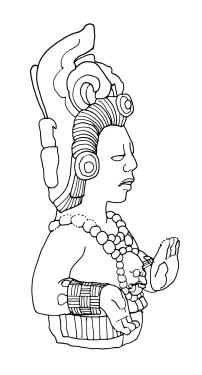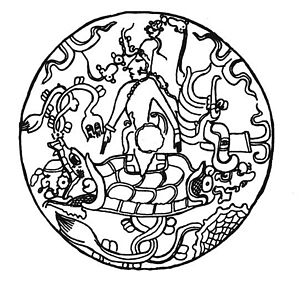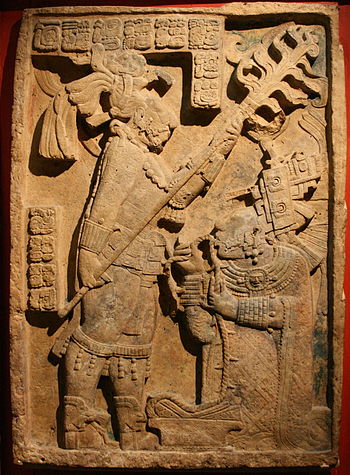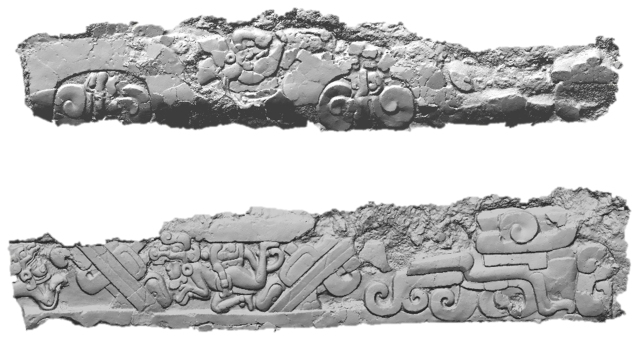Lintel 24 ancient Maya limestone carving from Yaxchilan,linda schele colection
mayan line drawings yaxchilan
linda schele colection
http://ancientamericas.org/collection/search
....................
https://www.google.com/search?q=mayan+line+drawings+yaxchilan&sa=X&hl=en&gl=us&authuser=0&biw=1360&bih=677&tbm=isch&imgil=hw5hEb7KsKvpfM%253A%253BriOeW6vYxvxcXM%253Bhttps%25253A%25252F%25252Fwww.pinterest.com%25252Fpin%25252F166422148706478400%25252F&source=iu&pf=m&fir=hw5hEb7KsKvpfM%253A%252CriOeW6vYxvxcXM%252C_&usg=__7pWv3hFSmtJQqMLvPIGaiv66nVY%3D&ved=0CCsQyjdqFQoTCPrd0Oio6cgCFUMdHgodyD0OvA&ei=wewyVrp5w7p4yPu44As#imgrc=1KxhYOkNj27SrM%3A&usg=__7pWv3hFSmtJQqMLvPIGaiv66nVY%3D
https://en.wikipedia.org/wiki/Yaxchilan_Lintel_24

......................
http://www.famsi.org/research/schele/bypmathews.htm
About the Linda Schele Drawings
by Peter L. Mathews
This wonderful archive represents the drawings made over the career of the great Mesoamerican scholar Linda Schele, who died in 1998. Linda was a prolific scholar who originally trained as a studio art teacher. Most of the drawings in this collection were made by her as illustrations for her numerous publications.
Linda Schele’s great books include: "Maya Glyphs: The Verbs" (Schele 1982), the "Palenque Bodega" book (Schele and Mathews 1979), "The Blood of Kings" (Schele and Miller 1986), "A Forest of Kings" (Schele and Freidel 1990), "Maya Cosmos" (Freidel, Schele, and Parker 1993), and "The Code of Kings" (Schele and Mathews 1998). Where possible, references will be made to these publications in the captions. References to other publications will be included where appropriate. In most cases, explanations and interpretations of the drawings can be found in the cited publication, and the browser/reader may find it of value to check the reference as a first step to finding out more about the monument in question.
Linda Schele believed very strongly in open scholarship, and readily shared with others her work, whether it was "work-in-progress," or new insights, or finished manuscripts. In similar vein, she believed fiercely in the open and free dissemination of her drawings: she wanted them to be available to all who wanted to use them, whether they were recognized scholars or interested amateurs. Linda always freely gave permission for others to use and publish them. This openness paid off in many different ways. On several occasions, someone would see one or other of her drawings and enter into correspondence with her, beginning an exchange that led to a significant new find or interpretation.
Linda wanted that spirit of openness and sharing to continue after her death, and she and her husband David stipulated that FAMSI should be the central clearing-house for the public dissemination of her drawings, via its web-site. The original drawings have been bequeathed to the Schele Collection in the Benson Library at the University of Texas.
In accordance with Linda’s wishes, the drawings contained in this archive are freely available to all interested parties for scholarly study. For publication use of her drawings, permission
must be requested from FAMSI. The Foundation will then provide a copyright license. In honor of Linda, FAMSI may request a donation for the Schele Chair at the University of Texas. Processing fees are charged if applicable. Requests and correspondence should be addressed to:
famsi@famsi.org or FAMSI at 268 South Suncoast Boulevard, Crystal River, Florida, 34429. (Fax: 352-795-1970).
The drawings in this archive were made over an almost 30-year career, and incorporate a few changes in drawing conventions (those representing broken sections of monument, plain background, and so on). The archive also includes some charts, computer-generated illustrations, and field sketches, although the vast majority represent final, inked drawings of monuments and inscriptions. These finished drawings were made on Mylar drafting film, and the earlier ones were made by using technical drafting pens and China ink. During the 1990’s, Linda began to use "felt-tipped" pigment liner pens. Linda’s drawing lines are characterized by quite fine lines: she mostly used pens of 000, 00, 0, 01, and 02 thickness, and only rarely used pens with a line thickness of 03 or greater.
The format chosen for the captions is somewhat open-ended. It has been decided for the sake of expedience that at minimum the site, building, and monument designations be recorded. In most cases, however, we have tried to go further. Sometimes this involves further specification (for example, which segment of the text, if the drawing is not of a complete inscription). In many cases, Linda signed the drawing, and in some cases she also noted the year in which the drawing was completed: where possible, this information is included in the caption.
The captions to the drawings in the Linda Schele Archive have been contributed by many of Linda’s friends. David Schele himself coordinated several of Linda’s students in the project (Julie Acuff, Joyce Banks, Ed Barnhart, Cristin Cash, Lori Conley, Michelle Dippel, Nicole Dunn, Megan O’Neil, Matthew H. Robb, and Mark Van Stone) and great headway was made. Other contributors have been Inga Calvin, Justin Kerr, Peter Mathews, Sandra Noble, and Sylvia Perrine.
I hope that this archive will prove as useful to future investigators after Linda Schele’s passing as it has been to her friends and colleagues during her lifetime. This remarkable archive stands as one of the memorials to the great achievements of a phenomenally talented woman who forever altered the course of Mesoamerican research and also the way in which that research is conducted. I should again like to thank David Schele for his generosity in allowing, and aiding, the dissemination of this archive, and also FAMSI for providing the resources to do it.
As Linda would have said, "Well, here it is—now go out and use it!"
Sources Cited
| Freidel, David A., Linda Schele, and Joy Parker |
| 1993 | Maya Cosmos: Three Thousand Years on the Shaman’s Path. New York: William Morrow and Company. |
|
| Schele, Linda |
| 1982 | Maya Glyphs: The Verbs. Austin: The University of Texas Press. |
|
| Schele, Linda, and David Freidel |
| 1990 | A Forest of Kings: Untold Stories of the Ancient Maya. New York: William Morrow and Co. |
|
| Schele, Linda, and Peter Mathews |
| 1979 | The Bodega of Palenque, Chiapas, México. Washington, D.C.: Dumbarton Oaks. |
|
|
| 1998 | The Code of Kings: The Language of Seven Sacred Maya Temples and Tombs. New York: Scribner. |
|
| Schele, Linda, and Mary Ellen Miller |
| 1986 | The Blood of Kings: Dynasty and Ritual in Maya Art. New York: George Braziller, Inc., in association with the Kimbell Art Museum, Fort Worth. |















